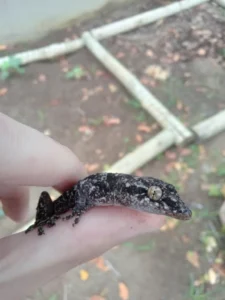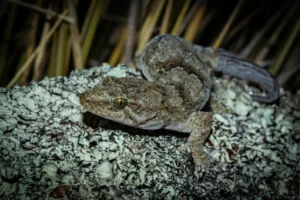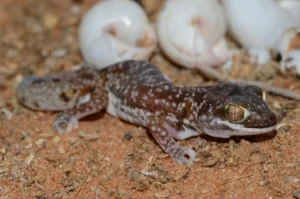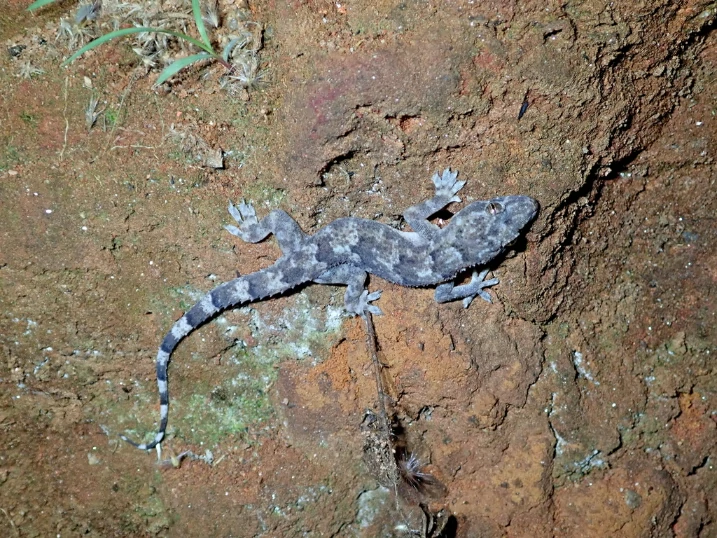Caves are dark, quiet, and cool. very different from sunny walls and gardens where you usually see geckos. You might wonder: do geckos actually live in caves, or do they just sneak in sometimes?
Some geckos do live in caves, but mostly species that can handle low light and high humidity. While many geckos like warm walls, trees, and city areas, some have made caves their home. In caves, they find shelter, food, and protection from predators.
Which Geckos Are Cave Dwellers?
Not all geckos can handle cave life. Only species that can deal with darkness, high humidity, and cooler temperatures do well.
For example:
-
Mediterranean House Gecko: Sometimes goes into shallow caves or rock cracks near humans.
-
Goniurosaurus luii: Lives in limestone caves in Vietnam. Hunts at night on rocky surfaces.
-
Cyrtodactylus species: Found in caves across Southeast Asia. Can survive long periods with very little sunlight.

These geckos are small, active at night, and can hunt in low light, which makes caves a good place for them.
Why Do Geckos Go Into Caves?
Caves offer a few advantages:
-
Shelter from predators: The dark space keeps snakes, birds, and mammals away.
-
Stable temperatures: Caves stay cooler in summer and warmer in winter.
-
Humidity: Moist air helps geckos stay hydrated.
Geckos don’t always live in caves full-time. Some use them for shelter during the day or bad weather and go back outside to hunt at night.
How Geckos Hunt in the Darkness
Hunting in a cave is different from hunting on walls or trees. Geckos rely less on sight and more on feeling vibrations and touch.
-
They can sense insects moving across cave floors or walls.
-
Some have eyes that work well in very low light.
-
Tongue flicking helps detect chemical signals from insects hiding under rocks or in corners.
Cave geckos are patient hunters. They often wait for prey to come close instead of chasing it openly.
Examples of Caves Where Geckos Live
Geckos are found in several cave-like spots:
-
Shallow limestone caves with open entrances where some light comes in.
-
Rock cracks and overhangs that feel like caves in cities or deserts.
-
Underground tunnels in tropical forests with steady humidity and shelter.
These places protect geckos from weather and predators while giving them access to insects and spiders.
Do Geckos Live Deep Inside Caves?
Most geckos don’t go far into pitch-black caves. They usually stay near entrances where insects are more common.

Deep inside, food is scarce, and moving around is harder, even for night hunters. Only a few specialized species can survive far from the entrance for long periods.
Some tropical cave geckos eat crickets and tiny spiders deep inside, but that’s rare.
How Geckos Survive Without Sunlight
Unlike geckos on walls or trees, cave geckos rarely get sun.
They survive by:
-
Using stored body fat: Energy from meals keeps them going.
-
Lower temperatures: Cooler spots lower their energy needs.
-
Night hunting skills: Even in dim light, they can find insects.
These tricks make cave life possible, but only in certain climates and regions.
Are Caves Safe for Geckos?
Caves keep geckos away from many predators, but they’re not risk-free:
-
Snakes and bats may hunt near entrances.
-
Floods in tropical caves can be deadly.
-
No sunlight can limit certain behaviors, like warming themselves.
Still, compared to open areas, caves give reliable shelter and humidity, which many geckos like.
How Geckos Reproduce in Caves
Geckos in caves lay eggs in safe spots: under rocks, in cracks, or on cave walls.
-
Eggs are small and sticky so they stay hidden from predators.
-
Some species may lay multiple batches during warm months if conditions stay good.

Stable temperatures and humidity in caves can even extend the breeding season.
Do Geckos Eat Dead Bugs in Caves?
Like other geckos, cave geckos mostly go after live prey. Movement triggers their hunting instincts, even in low light.
Dead insects are usually ignored unless fresh and placed where they seem to move. In caves, live bugs like crickets, spiders, or small beetles are their main food.
Cave geckos are efficient hunters, often catching several prey items per night to survive where insects are less common than outside.
How Geckos Move Inside Caves
Cave geckos are skilled climbers, moving on walls, ceilings, and even stalactites.
-
Sticky toe pads help them cling to smooth or rough surfaces.
-
Low-light vision and vibration detection guide them through tight spots.
-
Slow, careful movements keep prey and predators from noticing them.
Even in darkness, geckos move through caves with surprising precision.
Are Caves a Permanent Home for Geckos?
No. Most geckos only use caves temporarily. Only some specialized species live there full-time.
Things that limit cave living:
-
Less food deep inside caves.
-
Temperature and humidity changes in shallow caves.
-
Competition with other cave animals.
Geckos take advantage of caves when they need to, but rarely leave open areas completely unless they’re fully adapted.
Conclusion
So, do geckos live in caves?
Some species do, especially ones that can handle low light, high humidity, and steady temperatures. Others just visit for shelter or hunting and rarely go deep inside.
Caves give protection, steady microclimates, and prey. Movement, vibrations, and low-light vision help geckos hunt effectively even in the dark.
Whether full-time cave dwellers or occasional visitors, geckos are flexible little lizards. In caves, they survive quietly, hunt skillfully, and show that even in darkness, life can thrive.
Hi, my name is Ezra Mushala, i have been interested animals all my life. I am the main author and editor here at snakeinformer.com.

